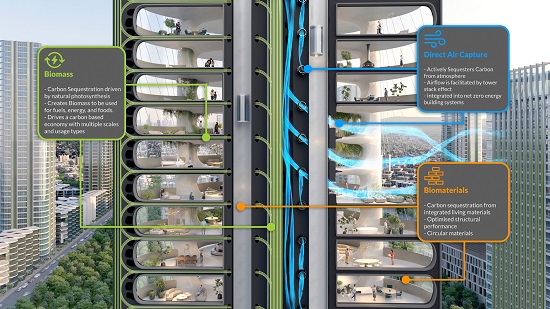 Thursday, October 3, 2024
Thursday, October 3, 2024  Thursday, October 3, 2024
Thursday, October 3, 2024 
Buildings are a major part of the climate change problem. They require a lot of energy to build and operate, accounting for 74% of electricity consumption and a third of greenhouse gas emissions in the United States alone. Plus, before they’re even occupied, the production of building materials and the process of construction represent another major source of what’s known as embodied carbon, adding up to an estimated 11% of global carbon emissions.
The global architecture firm Skidmore, Owings & Merrill understands the environmental impact of buildings and wants to do more about it. Being in the business of designing new buildings – and adding to the problem – SOM acknowledges that architects are hardly guilt-free. “The question we asked ourselves,” says SOM partner Chris Cooper, “is how do you make a building that does more good than harm?”
Their answer, presented recently at the COP26 United Nations climate change conference, is a building that absorbs more carbon dioxide than it produces.
The concept, called Urban Sequoia, proposes a building with a physical form optimized to reduce energy requirements, coupled with building materials and systems that either sequester carbon dioxide or suck it out of the air. The towers the architects have designed to illustrate this concept have several cutting-edge elements. Wrapping the buildings are algae-filled facades that produce biofuels that can power the building. Inside, structural components made of biological materials and insulation made from hemp sequester carbon throughout the building’s lifetime. Built-in direct air capture systems pull CO2 out of the air and either store it or make it available for industrial use.
Keep reading on FastCompany.com